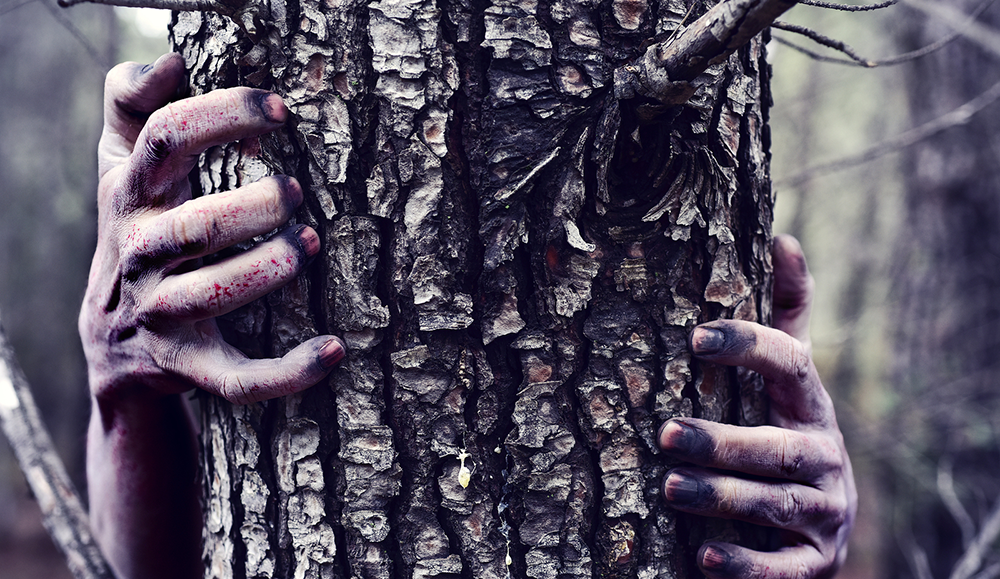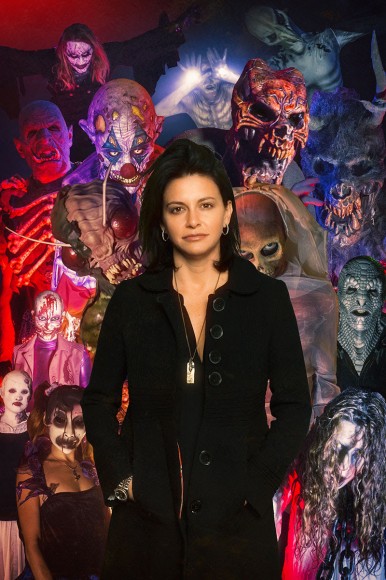Face Your Fear: How One Entrepreneur Learned to Scare the Pants Off Her Customers

“The hayride started out very organically as I got deeper into the hobby of decorating the hell out of my house in suburban Los Angeles and noticed how popular my crazy Halloween house was getting with neighbors,” Carbone says. “I didn’t understand how successful it could be until I started digging into the economics of it. Once I took a step down the rabbit hole, I slipped – and I am still slipping.”
When she began decorating her yard, Carbone probably didn’t realize her hobby would grow into a horror attraction empire one day – but that was before she discovered Halloween was a multibillion-dollar industry that, oddly enough, evaded most entrepreneurs’ attention in L.A.
“I was shocked at how few choices existed in a market the size of L.A. in the realm of Halloween activities,” Carbone says. “Coming from New England, we were barraged with Halloween offerings at every intersection, so I started to feel a hole in the market that I thought I could fill. My cofounder, Alyson Richards, was always looking for haunted houses and hayrides to surprise me but had a really hard time finding them – and zero luck on the hayride front.”
It was this “hole in the market” that motivated Carbone to start TTO.
“My hope was that I would bring a down-home, old-world Halloween magic to the live attraction space in L.A.,” Carbone says. “I wanted to provide an experience that would be super unique and intrigue to a city-dwelling population, a knock-your-socks-off, how-is-this-possible-in-a-city kind of concept.”
From Haunted Hayride to Horror Heroine
The original Haunted Hayride attraction took a lot of groundwork to get rolling, including a massive marketing blitz.
“We marketed like we were Disney,” Carbone says. “I believe passionately that the way you introduce yourself to the world is what [the world] will believe [about you]. I was terrified of having no one show up, and I knew how to market the heck out of brands from my tenure at Clear Channel Entertainment, so in my fear of nobody buying a ticket, I plastered the town with images of Haunted Hayride terror that [people] just couldn’t escape.”

Melissa Carbone, founder of TTO Productions and mastermind behind the Los Angeles Haunted Hayride
Success depended on more than simply plastering the town with posters, however. Carbone and Richards weren’t trying to replicate models that already existed in the L.A. Halloween entertainment market – they were trying to introduce something totally new.
“We wanted to use environments that weren’t being used in this way, and we wanted to do it in a way that physically transported people into a world and provoked the ultimate degree of suspension of disbelief achievable without strapping a device to your face,” Carbone says. “It was a very careful strategy, because we had one shot to get this right before we blew through our money and had to raise more for a second chance.”
Carbone and Richards nailed their one shot, as evidenced by the national exposure the hayride achieved. Carbone attributes much of the success to the fact that “we operate like a business, not a local Halloween haunted house.”
It hasn’t all been smooth sailing. No business achieves success without facing a few challenges, and the more growth a company experiences, the greater the challenges get.
“I’m still overcoming them,” Carbone says. “The challenges don’t stop, and the greatest challenges inevitably seem to be the ones you’re facing when asked the question. I’d say scaling our brands is the one from which we’re still getting bumps. We have a handle on the formula, it’s just very expensive, and we’re still a small team.”
Mistakes Are Scary, Too
Speaking of challenges, Carbone is the first to admit TTO’s rise hasn’t been mistake-free.
“We have had a couple new attraction launches go epically wrong, and it was a hard pill to swallow,” Carbone says. “I had always been terrified of failing – especially in a venture with money of friends and family involved – so I was leveled the first time it happened.”
Though she was “leveled,” Carbone didn’t stay that way. She was able to get back up once she realize that something only becomes a failure if you let it stop you.
“Quitting after failing is how it stays a fail,” Carbon says. “I dissected the data to learn, and boy, did I. That was the first moment I understood that failing can be the best teacher and can often be the catalyst for the biggest windfall of success you’ll ever have. Using the data of mistakes and coming back with better tools is everything. When you’re down, you cannot stay down.”
Understanding that errors will occur can be crucial to moving past them. Everyone makes mistakes. Those who fight this inevitability will have the hardest time coping.
“When I was a kid, I used to wakeboard on my hometown lake, and we used to say, ‘If you’re not falling, you’re not trying,'” Carbone says. “Words to live by to this day.”

“We were dazzled by people wanting us to do films with them, musical festivals around Halloween, and work with iconic personalities on their brands,” Carbone recalls. “While I wanted to do all of it, it’s not our core. It’s not where we were experts and excelling. Put everything through an ‘Is this in line with my core mission?’ filter, and if the answer is ‘no,’ don’t do it.”
Don’t Be Frightened
While TTO might base its business on scaring people, there’s no room for fear in the fear business.
“[Fear] is a big topic that I discuss in detail in my book, Ready, Fire, Aim: How I Turned a Hobby Into an Empire , and one that’s hard to sum up briefly because I literally think it’s the plague of dreams,” Carbone says. “The fear of failure starts to subside as you fail and understand it’s not really failing unless you stay down. When you can alter your view of failure and start to see it as the answer to the biggest successes that have ever existed in our society – think Steve Jobs, Albert Einstein – it starts to feel like a tool instead of a destination. To get there, you must be willing to wipe the blood off your chin and jump again, because it will never hurt as much as it did the first time.”

